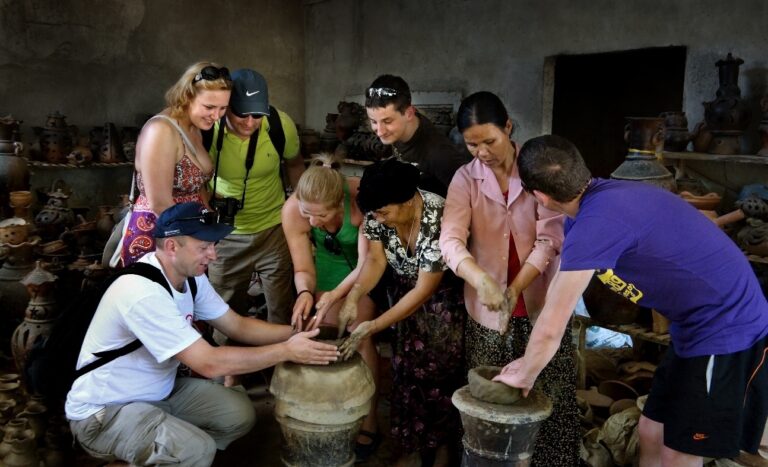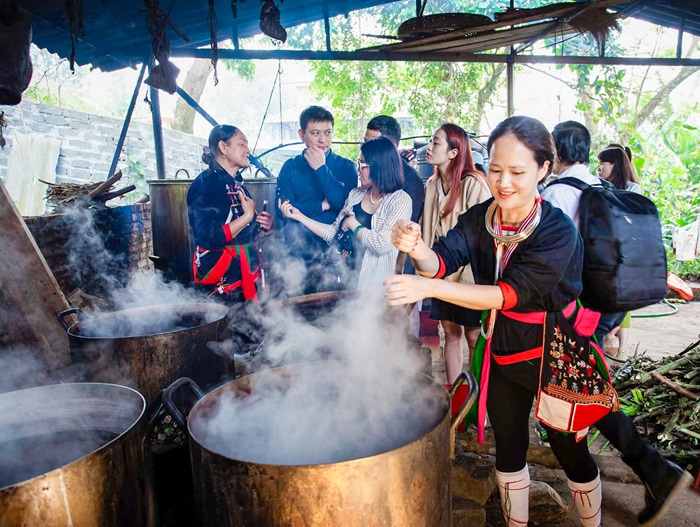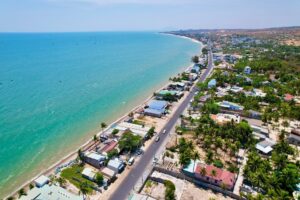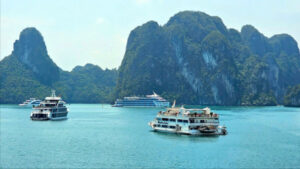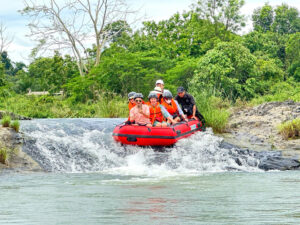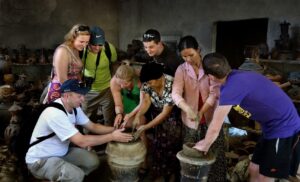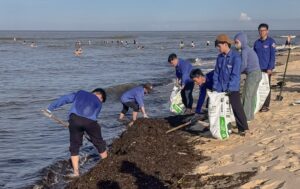When foreign visitors come to Vietnam they may travel to famous sites nationwide such as Cau Vang (Golden Bridge) in Da Nang or Fansipan Mt Cable Car Station in Sa Pa, or they may drop in a restaurant with an English menu, with all of these things having something in common.
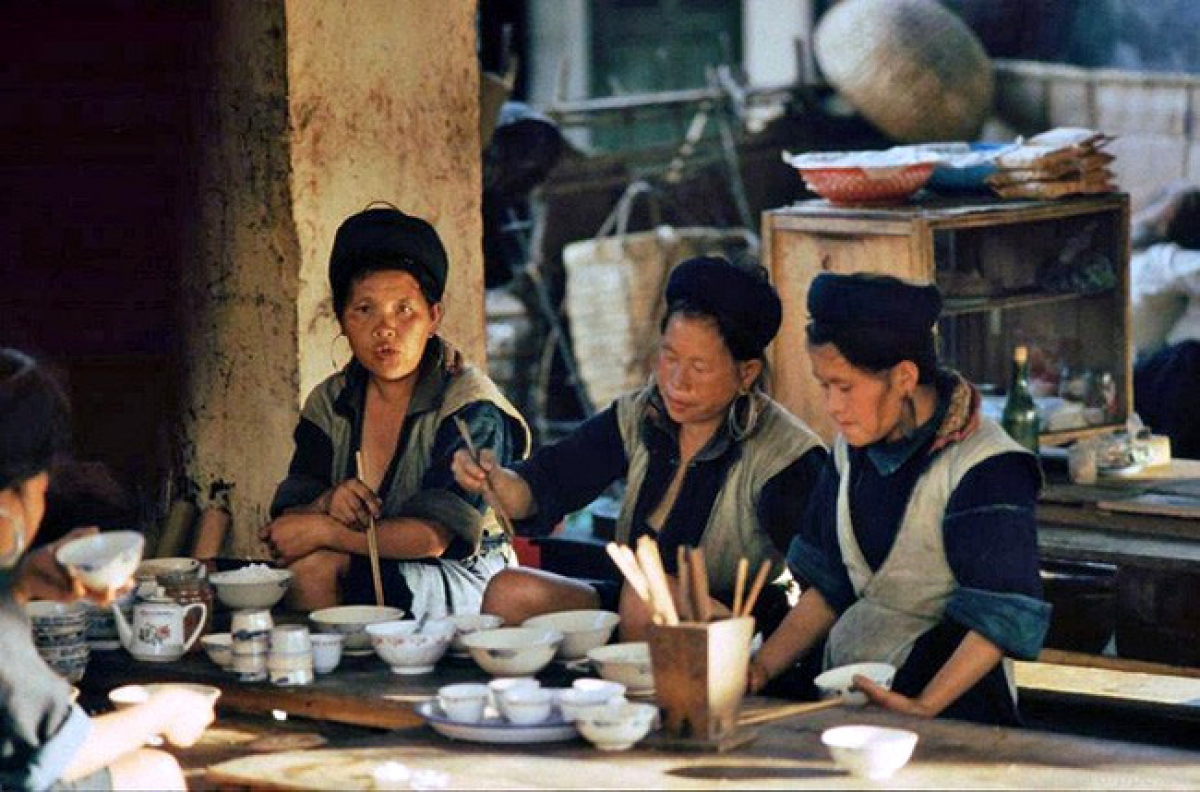
In addition to the strength of unique natural landscapes and a rich and vibrant culture, the concept of ‘tourism products’ was quite strange in Vietnam before the year 2000. (A file photo of Sa Pa in the 90s by Hans-Peter Grumpe)
The answer is they were all invested in to achieve the tourism industry’s primary goal of creating stronger products, but these products were rarely seen in Vietnam before the year 2000.
If one looks back at the travel records of foreign tourists to Vietnam in the early 2000s, “tourism products” mostly involved indigenous women.
In Sa Pa, a tourist resort in the northern highlands with a mild climate, a Hmong woman equipped with a few words in English could be found hosting a Western guest home.
American journalist Taylor Holliday recalled an experience in Ben Thanh market, a major tourist destination in Ho Chi Minh City, when small traders attempted to sell their goods, asking, “Madame, you look, you buy?”
“Madame, you look, you buy?”
Holliday traveled to Ben Thanh market in 2005 to produce a report on Vietnamese cuisine for The New York Times. Tour operators in the United States were offering US$4,000 to US$5,000 to food professionals and foodies for a 10-day trip to explore Vietnamese cuisine.
At that time, American chefs of Vietnamese origin had risen to prominence in the US after more than 30 years. Some big names such as Charles Phan, Michael Huynh, and Mai Pham had won major prizes, developed respected restaurants, and written books, giving rise to the Vietnamese cuisine mania in the country.
But for many US tourists to Vietnam, rushing straight into local wet markets would often bring them disappointment. It was the case for Holliday. With Ben Thanh market considered the food mecca of Ho Chi Minh City, Holliday and her husband got lost in a place with an ‘endless array of unrecognizable foodstuffs’ and were overwhelmed by the ‘smell of raw and cooked food’.
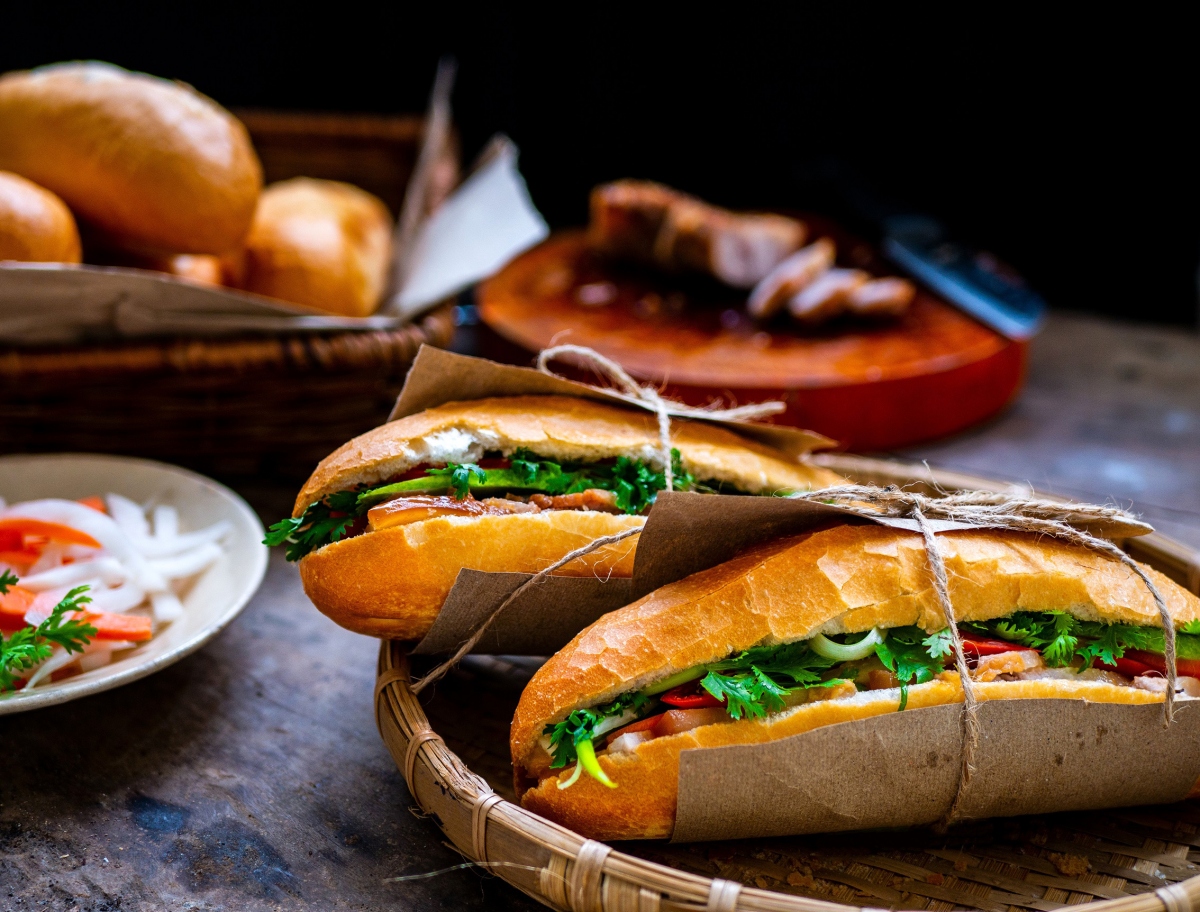
Vietnam’s delicious dishes will become attractive tourism products if they are given careful attention and care. For example, an English menu is needed to help guests understand the food.
Flying to Hanoi, she dropped in at the December 19 Market, a small marketplace noted for dog meat. What she saw were full-bodied dogs baring their teeth on the stalls. “If we hadn't already toured enough markets to know our rau răm from our galangal and our banana flower from our dragon fruit, it would have been highly frustrating,” she wrote in her story.
The market was later dissolved and turned into a walking zone and a book street.
So what would people like Holliday like to experience in Vietnam? Travelling the length and breadth of the country, she found that, “it’s better to wade in slowly.” She stopped at a few luxury restaurants where she found menus in English and fluent English-speaking chefs who helped her to understand the ins and outs of the culinary art. There, she paid about US$3 for a dish, but in return, she felt completely satisfied.
Even when doing tours of wet markets she found the riverside fish market in Nha Trang to be more beautiful when paying for a serious tourism product, a tour designed and guided by David Thai.
Holliday’s trip revealed a basic problem of newly-formed tourism industries that despite being rich in resources, these industries were not yet able to create distinctive tourism products. Raw resources in a natural setting coupled with an extraordinary community culture can be considered as ‘mines’ that need to be specifically designed and exploited to attract high spending visitors. If these raw resources are displayed and left to the visitors to explore on their own, then it could lead to an extremely hopeless experience.
Not just a tour
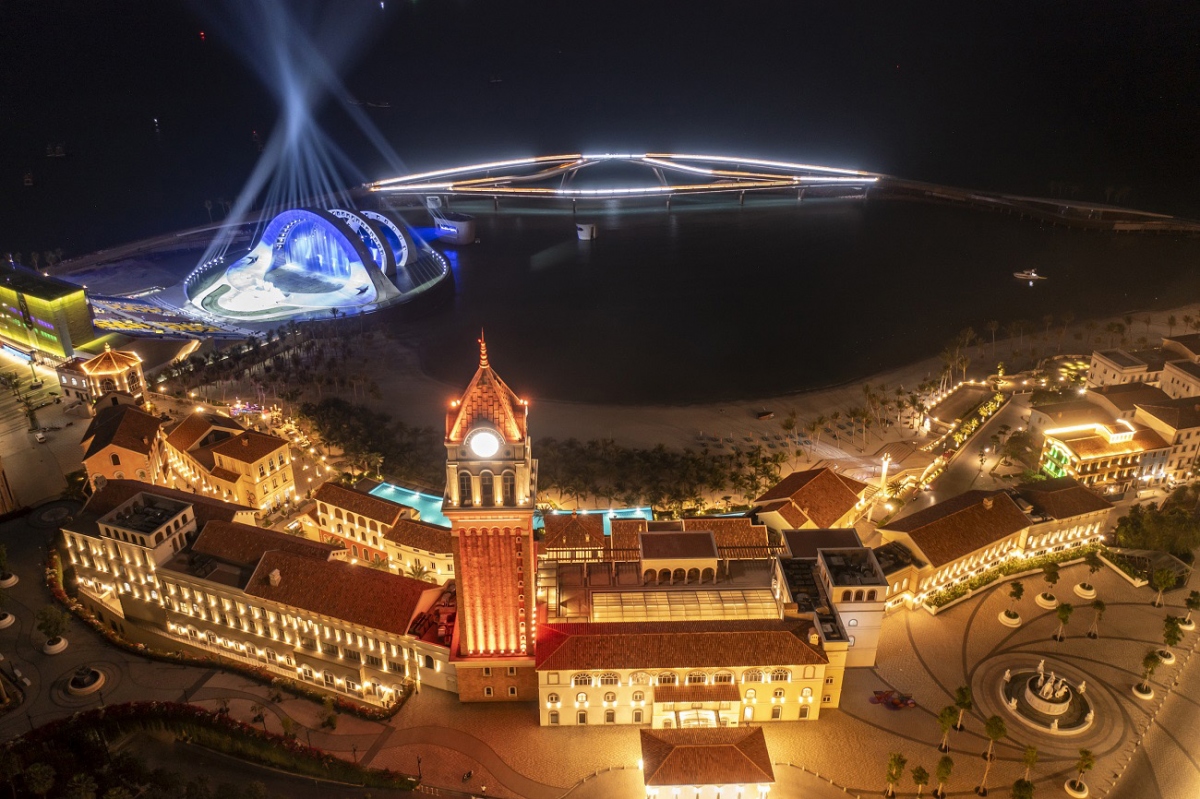
Elevating the natural landscape into a typical tourism product is a long journey of the Vietnamese tourism industry. Pictured is the town of Sunset in Phu Quoc.
Vietnam paid close attention to developing the tourism industry quite early. In 1960, the Government established the first tourism company to promote scenic spots.
Before the Doi Moi (Renewal) process was introduced in 1986, scenic spots were the main feature of tourism development policies in the country. It was not until 35 years later in 1995 that Vietnam began to open its door to the world and the development of tourism services was reassessed. As a result, a Master Plan on Tourism Development in Vietnam was formulated.
In the document the word “tourism product” was mentioned 14 times, whilst the document also introduced policies aimed at attracting investment in tourism both at home and abroad. At that time, the Government only set a goal of luring about US$4.5 billion in tourism development over the following 15 years.
2009 alone saw the total investment capital of the local tourism industry exceed US$4.5 billion. Thanks to mindset changes coupled with mammoth investment, small towns from Sa Pa and Da Nang to Ha Long which attracted Western tourists for discovery tours were transformed into international tourist hubs.
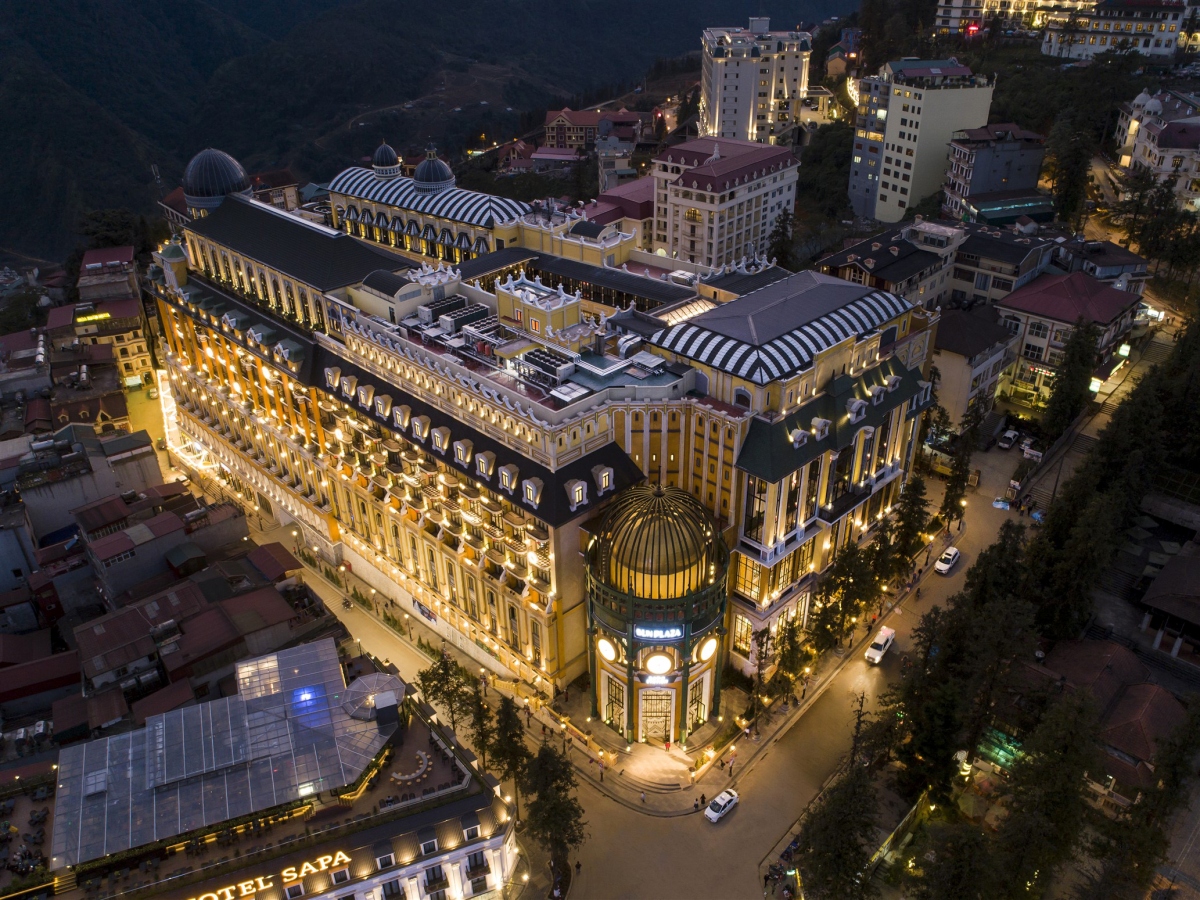
Hôtel de la Coupole, a hotel designed with outstanding French architecture in Sa Pa.
Now places like Sa Pa see millions of visitors flock to witness the beauty of the Hoang Lien mountain range from a billion-dollar cable car system. They can stay at the Hôtel de la Coupole, a five-star accommodation facility designed by legendary Bill Bensley.
In Da Nang, along with the modern cable car system to the top of Ba Na mountain, visitors are also attracted by jubilant festivals, high-end resorts, and five-star hotels. Even its natural scenery has risen to prominence with a new, international landmark named Golden Bridge built on the top of Ba Na mountain. Located on the Son Tra peninsula is a restaurant with a menu designed by Michelin-starred chefs at the Intercontinental Da Nang Sun Peninsula Resort.
Ha Long is home to the Sun World entertainment complex with countless recreational activities on the shores of the heritage bay, whilst not far away is Yoko Onsen Quang Hanh, a high-class hot mineral resort meeting Japanese standards in Cam Pha city.
Apparently. high-class tourism infrastructure and tourism products not only create their own value, but also serve to enhance the inherent resources of Vietnam.

Golden Bridge in Da Nang, one of the new tourist landmarks in Vietnam.
The most interesting point of Holliday’s article is that she returned to Ben Thanh market where she started her first food tour in Vietnam, experiencing tourism products designed by experts, as well as meeting with famous chefs and English-speaking tour guides to learn about local cuisine and culture.
“And sure enough, after all we had seen and learned, the great market was now a temple of delights, the foodstuffs familiar, the smells enticing, the restaurant stalls beckoning. We felt right at home as we cruised confidently through the stalls, chatting with the cooks, checking out their display cases and bubbling pots, looking for that last memory-making meal,” she wrote in the article.


